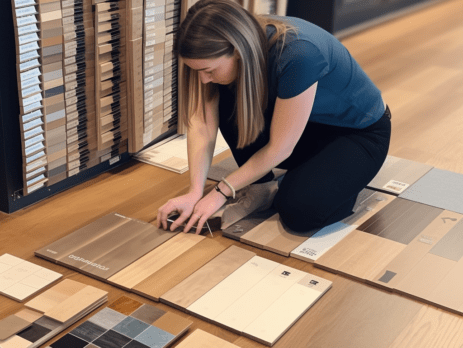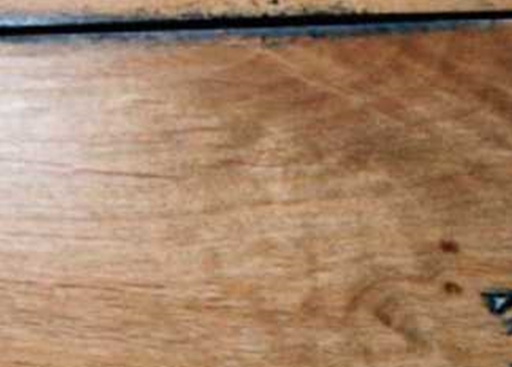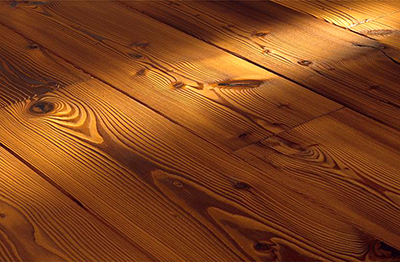Hardwood Flooring: Choosing the Right Wood Species for Your Home
In recent years, the allure of hardwood flooring has grown tremendously in popularity among homeowners. With its timeless elegance, unmatched durability, and the unique feel it adds to any home, the appeal is truly hard to resist. However, the decision-making process doesn’t end once you’ve chosen to install hardwood floors – choosing the right wood species for your home is a critical factor that you must consider for both its functional and aesthetic implications.
In the world of hardwood flooring, a wood species refers to the specific type of wood that will be used to create your floor. Each species carries distinct characteristics, including variations in color, grain pattern, hardness, and sustainability. Besides these inherent traits, there are other factors like the process of installation, longevity, and treatment against pests and diseases that can differentiate one species from another.
To make an informed decision, knowing what is available in the market and aligning it with your requirements is essential. Oak floors, perhaps the most popular choice, are renowned for their extremely durable nature and classic grain pattern. Available in two major types, red and white, oak wood offers a spectrum of shades that range from light tan to a rich reddish-brown. The oak’s hardness makes it an ideal choice for high-traffic areas.
Similarly, Maple, another common pick, is appreciated for its delicate, light appearance and even texture. However, it’s notable for being harder than oak, making it another robust option. On the other hand, Walnut wood, with its exceptionally rich, deep brown coloration and unique grain pattern, adds a touch of luxury to any space. Despite being softer than oak and maple, it still offers a reasonable degree of durability.
Cherry, another softer wood, is highly prized for its stunning red undertones and smooth grain. Pine, while not technically a hardwood but a softwood, is often chosen for its knotty, rustic charm and versatility. Choosing the right wood species for your home is an exercise in balancing several aspects. One is durability – while hardwood, in general, is known for its hardiness, differing levels of hardness among species affect its resistance to dents and scratches.
Appearance is another essential factor – from color and grain to how the wood ages or ‘patinas’ over time can significantly impact the room’s overall look and feel. Maintenance requirements, the availability of the wood species, and your budget should also dictate your choice. It’s also essential to consider your local climate’s impact on the wood. Accustoming to moisture levels, some species respond better in certain climates. For instance, if you live in a high-humidity area, species like teak or mahogany are better choices due to their natural resistance to moisture absorption.
Lastly, considering the investment aspect, hardwood flooring undoubtedly adds to your property’s value. However, certain species, particularly exotic ones like mahogany or teak, can enhance your home’s value purely because of their upscale perception and rarity.
Beneath the umbrella of hardwood flooring, several species of wood each present their unique combination of features. The term ‘wood species’ in the context of flooring simply refers to the varying types of wood that can be used to create floors.
 From the stately Oak to the rustic Pine, exotic Mahogany to the sturdy Maple, each species, in essence, offers homeowners a different walk of life. So, what exactly differentiates these wood species from one another, and why does it matter when choosing hardwood flooring for your home?
From the stately Oak to the rustic Pine, exotic Mahogany to the sturdy Maple, each species, in essence, offers homeowners a different walk of life. So, what exactly differentiates these wood species from one another, and why does it matter when choosing hardwood flooring for your home?
The answer lies in the subtle yet significant variation in the characteristics of each species, each serving a different need, aesthetic appeal, and lifestyle. The basis of these differences arises from the species’ inherent physical attributes – color being the primary one.
The natural hue of the wood species varies, along with the variety of stains and finishes available, offering a vast spectrum of colors to choose from.
For instance, Walnut impart a luxurious dark brown shade, Pine offers a warm, honey tan color, while Oak and Maple provide a range of lighter, more neutral hues.
This variety allows homeowners to select the color that best complements their home decor and personal style. The grain of the wood species refers to the pattern resulting from the tree’s growth rings and cellular structure.
For example, Oak prominently displays its growth rings, creating a wavy, intricate pattern. Conversely, Maple has a much more subtle, naturally straight grain. The choice of grain dramatically influences the final look of the floor, from classic and rustic to sleek and modern.
Hardness is the other crucial distinguishing factor. The hardness of a wood species refers to its resistance to impact, or in simpler terms, its capacity to withstand wear and tear. It is often measured using the Janka Hardness Test, which rates the wood’s resistance to dents and wear. The harder the wood, the more resistant it is.
Let’s dive into this: Oak and Maple are known for their high hardness ratings, making them suitable for high-traffic areas. There is a vast variety of wood species available in the market – each offers a unique set of properties. The aforementioned Oak and Maple are among the most popular, owing to their optimal mix of hardness, color range, and grain.
Cherry and Walnut, while being softer woods, are highly favored for their luxurious appearance.
More exotic species like Teak and Mahogany are valued not just for their stunning aesthetic appeal, but also for their natural resistance to moisture and insect damage. Bamboo, technically a grass but often counted among wood species, is gaining popularity for its eco-friendliness and resilience.
Identifying and understanding these factors that differentiate one wood species from another enables homeowners to make informed and personalized choices. The variety of wood species available provides a playground of options, but the fundamental factors – color, grain, and hardness – combined with personal needs and preferences, will help navigate this sea of options seamlessly. Taking a closer look at the various types of hardwood species, each carries its unique charm and characteristics. You’d be surprised at the charm and different overall feel each species would contribute to your home.
Let’s dive deeper into the diverse world of hardwood species – primarily focusing on Oak, Maple, Walnut, Cherry, and Pine.
Firstly, the star of hardwood flooring – Oak. This species comes in two variations: red oak and white oak, each with its unique color and grain. Red oak is known for its warm, rich red undertones, which can add depth and warmth to any room. Its grain is more prominent and spaced, which contributes to a certain rustic charm. On the other hand, white oak showcases more of a muted, pale brown, creating an entirely different – yet equally appealing – aesthetic. When it comes to hardness, oak holds its ground well. It is resistant to wear and tear, making it an excellent choice for high-traffic areas, providing both longevity and an evergreen aesthetic appeal.
Maple is another popular choice in the world of hardwood flooring. With its light, creamy color, it goes well with modern, minimalistic, or Scandinavian interiors as it offers a clean, neutral base. The grain pattern in maple wood is typically straighter and more uniform, bringing about a smooth and consistent look. As one of the hardest species available, it stands strong against scratches and dents, turning it into another good choice for areas with heavy footfall.
Walnut stands on its own with its uniquely rich and dark brown coloration. The dark sophistication that it brings forth lends a touch of luxurious elegance. Walnut’s grain is generally straight but can be wavy at times, adding further to its visual appeal. It falls on the softer side when compared to oak and maple but still maintains a reasonable degree of durability.
Cherry, on the other hand, is appreciated for its smooth texture and its beautiful reddish undertones. Over time, sunlight darkens the wood to a rich reddish-brown – a phenomenon known as patina. This aging process adds character to the wood, making it more appealing as it matures. Cherry isn’t as hard as oak or maple, making it more susceptible to dents, but its stunning aesthetics can make it worth the careful maintenance.
Finally, we arrive at Pine. Technically classified as a softwood, Pine is nevertheless used for flooring due to its unique attributes. It is softer than most hardwoods but boasts a natural ability to resist wear and dents. The signature knotty look of pine adds a distinct rustic appeal, making it a beautiful addition to a country or vintage-style home.
 So what type of wood flooring to choose?
So what type of wood flooring to choose?
The selection of your wood species is a personal choice, reflecting not merely the practicality of use, but also your style and taste. The variety of species – from the robust oak or maple to the luxurious walnut or cherry, and the rustic pines – offer a range of colors, durability, and aesthetic natures. Each one of these woods has its place and purpose, and knowing their individual characteristics would help you select the one that would make your house a home. Once we’ve explored the world of hardwood flooring and its myriad species, the question that naturally arises is: How do you choose the right one? As with every major investment, several important factors should be considered when deciding on the perfect wood species.
- Durability is one of the most prominent factors, especially for flooring, an aspect of your home that endures consistent heavy use. The ‘hardness’ of hardwood species can significantly affect their resistance to dents, scratches, and general wear and tear. As mentioned earlier, the hardness of a wood species is usually measured using the Janka Hardness scale, which ranges from zero to 4000, with zero being the softest and 4000 being the hardest. Wood types like Oak and Maple rank high on this scale, making them perfect for high-traffic areas like the living room, kitchen, or entrance. Conversely, a softer wood like Cherry / Pine might be more suitable for rooms with lower footfall.
- Next, the appearance of the wood species plays a major role. Factors like color & grain set each species apart and can dramatically influence your home’s look and feel. For example, the warm tones of Oak or the rich, dark shades of Walnut usually create a very distinct atmosphere. Similarly, the pattern of the grain, whether it’s the pronounced, rustic grain of Oak or the subtle, straight grain of Maple, can enhance the aesthetics. As each homeowner’s aesthetic preference varies, taking the time to explore the color and grain ranges available for each species is crucial.
- Maintenance is also worth considering. While all hardwood floors require some level of care, some wood species may necessitate more attention than others. For example, softer woods like Pine are more likely to get dented or scratched, so they may need more frequent refinishing. On the other hand, more robust species like Oak or Maple, while more resistant to initial damage, will also need periodic refinishing to maintain their shine and healthy appearance.
- Lastly, Cost is a major factor in the selection process. Pricing for hardwood species can vary quite a bit depending on various factors. For instance, availability plays into the cost; locally sourced woods like Oak or Maple are generally more affordable compared to exotic imports like Mahogany or Teak. The cost can also rise based on the quality of the wood and whether it’s solid or engineered hardwood. Installation costs, too, can add to the overall budget. It’s essential to factor in all these elements to understand the final cost of your chosen wood species.
Choosing the right wood species for your home is about finding balance based on your specific needs and desires. It’s weighing durability versus aesthetic appeal, factoring in the amount of maintenance you’re ready to undertake, and considering how much you’re willing to spend. It’s about realizing that your home’s hardwood flooring is an investment not only in its real estate value but also in the comfort and beauty of your day-to-day living experience.
The right hardwood species will effortlessly unite practical considerations with the artistry of mother nature to create a floor that is as durable as it is beautiful, as comfortable as it is luxurious. As with all natural materials, hardwood isn’t immune to the effects of its surroundings. Weather, temperature, and humidity can have a profound impact on the character and durability of your hardwood flooring, and thus, are crucial factors to consider when choosing the right wood species for your home. Understanding how different species respond to varying climates can help maintain the longevity and aesthetics of the hardwood floor. Hardwood species vary greatly in their level of resilience to changes in moisture, temperature, and humidity levels. When exposed to moisture without proper treatment, hardwood floors can swell, warp, or shrink, leading to unsightly gaps and consistency issues. In extreme temperature changes, hardwood can contract or expand, affecting its original shape and quality over time. One of the biggest misconceptions about hardwood is that it is universally resistant to changes in climate and moisture.
While hardwood is generally known for its durability, its reactions to moisture and temperature fluctuations can vary significantly depending on the species. For instance, one of the most popular hardwood species, Oak, is known for its impressive stability in response to environmental changes. This stability makes it a favorable choice in areas with fluctuating humidity and temperature.
Conversely, Maple, another popular choice, is less forgiving when it comes to moisture. Despite being harder than oak, it is more prone to damage from changing humidity levels, making it potentially a less favorable choice for places with high humidity or a significant change in seasons. The darker species, such as Walnut and Cherry, fall somewhere in between. While they aren’t as hard as Oak or Maple, their natural oils can provide a degree of protection against moisture damage. However, they might require more maintenance, such as regular sealing to keep them in good shape.
If you reside in a high-humidity area, species like Teak or Mahogany would be better choices due to their natural resistance to moisture absorption. These exotic species have oils that repel water, making them more stable in high-moisture environments. While these types are typically more costly because of their desirable features and their exotic origins, they can be worth the investment in the long run.
For arid or dry climates, where the air is often low in humidity, Pine would make an excellent option. It’s a softer wood that responds less dramatically to low moisture levels. However, it’s worth noting that Pine can dent more easily, meaning it may be best suited for areas with less footfall within the home. Apart from the species-specific considerations, installation methods, proper sealing, and routine maintenance all play vital roles in ensuring your hardwood flooring’s sustainability in the face of shifting climates. There are also technological advancements, such as engineered hardwood, that offer greater stability across a range of climate conditions as they are built in layers, giving them greater dimensional stability. In conclusion, no one-size-fits-all when it comes to choosing a hardwood species suited perfectly to all environments.
Understanding your locale’s climate and how each wood species responds to specific weather conditions is the key to choosing a hardwood floor that will not just survive but thrive in your home for years to come. The optimal choice would reflect a harmonious balance between nature and the comfort and convenience required for modern living. The deciding factor when choosing a hardwood species for your flooring isn’t just about appearance, durability, or climatic considerations. It’s also about viewing your investment from a financial perspective: how does the chosen wood species impact your home’s value? Hardwood flooring, in itself, is a significant value addition to any home. According to data from the National Association of Realtors, many homebuyers are willing to pay a premium for homes with hardwood floors.
But when you break it down by species, does the type of hardwood make a difference?
The answer is, unsurprisingly, yes. The classic choice, Oak, holds its appeal with homeowners and even floor installers for its durability and general aesthetic flexibility. Oak floors are more likely to match or complement a huge variety of styles, making it a safe bet for a value boost. Maple, known for its hardness and light, clean look, can also be a smart investment, particularly in modern homes. Exotic woods like Mahogany & Teak, while pricier, are known as luxurious and desirable. These species don’t just elevate the aesthetic appeal of your home; they also add a lot more to your home’s market value because of upscale perception & rarity. Even though they are priced much higher, these exotic species often translate to a higher return on investment when you decide to sell a home or an apartment.
Even softer woods like Cherry & Pine, which offer unique aesthetic properties like beautiful red undertones or a rustic appeal, can be seen as value-adding features. Buyers who value these looks might be willing to pay significantly more for a home with these types of floors.
Certainly, the type of wood species you choose for your hardwood flooring can impact your property’s value. However, it’s vital to remember that the ultimate value addition doesn’t rest solely on the type of wood but also on its quality, the quality of installation, & the level of upkeep the floors have had. When choosing your new hardwood flooring, you want a trusted partner who can guide you through the journey. That’s where we, Kapriz Hardwood Flooring Store, step in.
Conveniently located for Santa Clara, San Jose, San Francisco, and Bay Area residents, we proudly offer a wide variety of the most sought-after species and top brands in the market at unbeatable prices. In our discount flooring store, our team of experts can help you navigate your options, understand your specific needs, and help you make the decision that best suits your home and lifestyle.
If visiting in person isn’t an option, don’t worry, we’ve got you covered. You can request quotes online, and we gladly ship nationwide, ensuring that no matter where you are, you can have the quality hardwood floors you’ve always wanted. With Kapriz Hardwood Flooring Store, your dream floors are just a call or click away.







